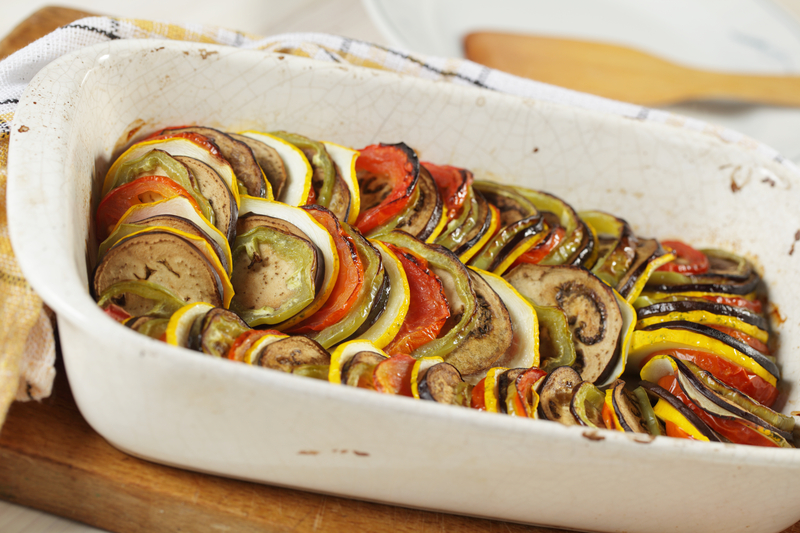 Baking is not just about following a recipe; it’s also about choosing the right tools for the job.
Baking is not just about following a recipe; it’s also about choosing the right tools for the job.
Among the many decisions bakers face, one of the most common is whether to use ceramic or glass bakeware.
Both materials have their unique qualities, and the choice can significantly impact your culinary creations.
In this article, we will delve into the pros and cons of baking with ceramic and glass, helping you make an informed decision for your next baking adventure.
The Appeal of Ceramic Bakeware
Ceramic bakeware has been a staple in kitchens for centuries, and for good reason.
Here are some of its notable advantages:
- Superior Heat Retention
Ceramic bakeware is celebrated for its ability to retain heat evenly throughout the cooking process.
This consistent heat distribution ensures that your baked goods cook uniformly, resulting in a golden, perfectly baked finish.
- Versatility
Ceramic dishes come in various shapes and sizes, making them versatile for various recipes.
You can find ceramic pie dishes, casserole dishes, and even loaf pans, each designed to enhance the cooking of specific dishes.
- Attractive Presentation
Ceramic bakeware is often praised for its aesthetic appeal.
The beautiful, earthy tones and rustic designs can elevate the presentation of your dishes, making them look as good as they taste.
- Easy to Clean
Ceramic bakeware is typically non-stick, which makes for easy cleanup.
Additionally, many ceramic dishes are dishwasher safe, saving you time and effort in the kitchen.
The Perks of Glass Bakeware
 Glass bakeware, while different in many ways from ceramic, offers its own set of advantages that can make it the preferred choice for some bakers:
Glass bakeware, while different in many ways from ceramic, offers its own set of advantages that can make it the preferred choice for some bakers:
- Transparency
One of the key benefits of glass bakeware is its transparency.
This allows you to monitor the browning and cooking progress of your dishes without having to open the oven door, which can lead to heat loss.
- Non-Reactive
Glass is non-reactive, which means it won’t interact with the ingredients of your recipes.
This is especially important for dishes with acidic ingredients like tomatoes, where ceramic bakeware could potentially impart a metallic taste.
- Easy to Clean
Similar to ceramic, glass bakeware is generally easy to clean.
Most glass dishes are also dishwasher safe, simplifying post-baking cleanup.
- Durability
Glass bakeware is known for its durability.
It can withstand high temperatures and is less likely to chip or crack compared to ceramic, making it a long-lasting investment for your kitchen.
Factors to Consider
When deciding whether to use ceramic or glass bakeware, consider the following factors:
- Recipe Specifics
The type of dish you’re making can influence your choice.
For dishes where even heat distribution is crucial, such as casseroles or pies, ceramic may be the better choice.
For recipes where transparency and non-reactivity are essential, like lasagna or baked pasta, glass might be preferred.
- Personal Preference
Your personal preferences as a baker play a significant role.
Some people may prefer the aesthetic appeal of ceramic, while others may prioritize the transparency and durability of glass.
- Maintenance
Consider the maintenance aspects as well.
If you prefer dishwasher-safe options or are concerned about chipping and cracking, your decision might lean one way or the other.
Investing in Quality Dishes
 If you’re seeking superior heat retention and timeless elegance in your bakeware, ceramic dishes are the choice to make.
If you’re seeking superior heat retention and timeless elegance in your bakeware, ceramic dishes are the choice to make.
Ceramic bakeware, known for its classic appeal, ensures even heat distribution, resulting in perfectly cooked dishes every time.
The rustic charm of ceramic also adds an aesthetic touch to your table setting, making it a favorite among those who appreciate both form and function.
This Dowan ceramic casserole dish is a must-have for any kitchen.
Its deep sides and tight-fitting lid are designed to hold and cook your favorite casseroles, lasagnas, and gratins to perfection.
The even heat distribution of ceramic ensures that every bite is cooked uniformly, and the rustic, hand-painted finish adds a touch of charm to your dinner table.
If you’re looking for versatility and transparency in your bakeware, this glass baking dish set is the answer.
The Bovado USA Glass Oven Baking Dish is a premium addition to any kitchen, designed for versatility and durability.
Crafted from high-grade borosilicate glass, this baking dish boasts a generous 3-quart capacity, making it ideal for various culinary creations.
Its nonstick surface ensures easy food release and hassle-free cleanup, while the absence of a lid allows for efficient heat distribution and browning of your dishes.
Whether you opt for the timeless elegance of ceramic or the transparency and versatility of glass, your choice of dishes can enhance your culinary experience.
Ceramic dishes add a touch of rustic charm and excellent heat retention to your meals, while glass dishes provide transparency and non-reactivity for a wide range of recipes.
Whichever you choose, investing in quality dishes can elevate your dining table and make your culinary creations shine.
Bottom Line – Is it Better to Bake with Ceramic or Glass?
The choice between ceramic and glass bakeware ultimately comes down to your cooking style, the specific recipe, and your personal preferences.
Both materials have their strengths, and neither is definitively better than the other.
Many seasoned bakers keep a variety of both ceramic and glass bakeware in their kitchens to suit different purposes.
So, don’t hesitate to experiment and discover which material works best for your culinary creations.
Whether it’s the rustic charm of ceramic or the practicality of glass, the right choice can make your baked goods truly shine.




